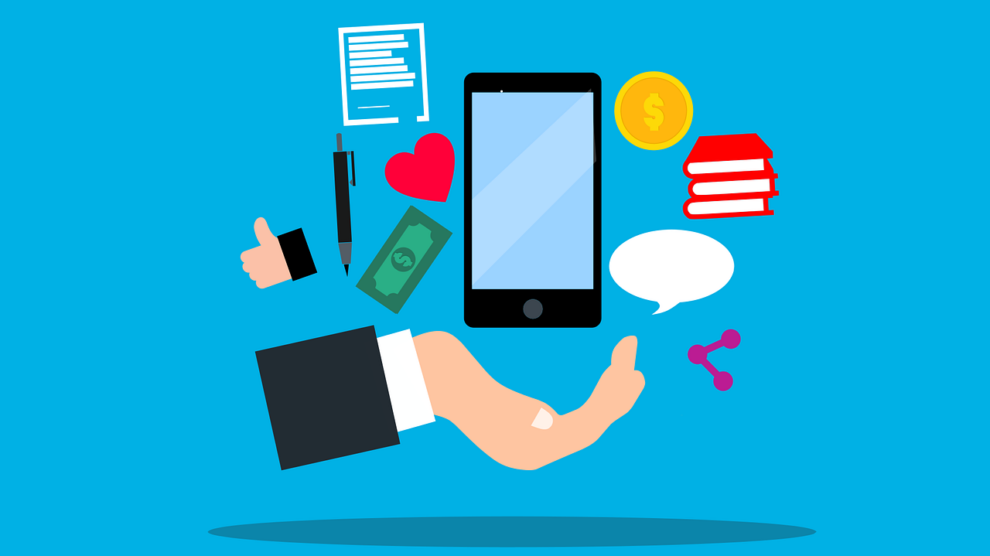Mobile apps are undeniably reforming industries and their potential cannot be questioned. Having said this – it is important to know that while these apps can earn millions of dollars for businesses, not every app does so.
So, how to create an app that earns for your business and what are the methods you can adopt?
Let’s explore the relationship between businesses, money, and apps
With over 3 million apps on both the Apple App Store and Google Play Store, the competition is fierce and to profit – you need to make the cut.
Determining factors
1. The platform of your App
When it comes to Apple, 25% of iOS Apps earn around $5,000. Whereas for Android, only 16% of apps earn around $5,000.
2. In-app purchase
Statistics tell us Candy Crush earns over $800,000 every-day through in-app purchases alone.
3. In-app Advertising
Through strategies like Cost per view, if a user plays your ad video, you can charge from your partner company.
4. Subscription
Applications like Netflix and Amazon Prime are generating high revenues through their subscription model.
5. Device option
If your app is compatible with devices other than your smartphone (like your Smart TV), you obviously increase your chances of making money.
Strategies for startups to make money through apps
1. Advertising
Advertising tops the charts when it comes to avenues of earning through apps. All you have to do is – display commercial ads inside your apps and you get paid by the ad networks.
Interstitial ads
Interstitial ads are the ones that pop-up while you browse through news and game apps for example. These ads boost business revenue revenue the most. How? By watching these ads users can unlock a higher level of function in the app. This convinces them to watch the ad and businesses profit from the resultant high impressions.
Banners or display ads
These ads are highly targeted but have low engagement rates. They are not obtrusive in nature. That means, even when these apps are displayed on the screen, the users can still interact with the app freely.
In-app video ads
This is a win-win strategy. App providers are benefited as users watch these ads and users are benefited because they receive rewards (like app currency) through watching these ads.
Native ads
These ads are mainly sponsored content or video to promote a product/service. But because they appear naturally, they are considered less intrusive and end up producing great revenue for providers.
2. Email Marketing
Email Marketing is another great strategy for earning more. There are various ways through which apps enable the collection of user emails. Now that you have the email addresses, you can use them as a marketing tool. Suppose your users are not active on the app for a long time, you can connect to them by email and remind them what they’re missing.
3. Sponsorship
Placing sponsored content within your application can also monetize your app. Here’s how it works – first you create a mobile app and work towards its popularity. Once the app gains users, contact a sponsor company. You then need to update the design of the app to match the style of your sponsor’s brand. And that’s all! Now you can either earn by splitting the revenue with your sponsor or decide on a monthly sponsorship fee.
4. Subscriptions
Then there are app subscriptions that make profits for businesses. When users pay subscriptions they unlock the full potential of the app. For example, they’ll have access to more high quality audios, videos, newspapers, magazines, or other services. Thus the subscription fee benefits both users and businesses.
5. In-app purchases
In-app purchases are virtual items that a user can buy through your app. While you can earn money through this, users get items such as bonuses, game currencies, unlocked levels, premium content, and more. These items are either products that are used once in the app or products that are bought for permanent usage.
6. Freemium
The freemium strategy is all about users paying for the upgraded version if they like the free version of the app. So, basically, you first serve the users with the best you have through your free app and when they like that they’ll, more often than not, want more of it. That is when they’re likely to buy the paid version.
7. Physical purchases
E-commerce businesses monetize their apps by selling physical goods such as phone cases, t-shirts, and more. The apps that users get to access are free of cost but businesses can make money when a sale goes through these apps.
One of the top examples here is the Angry Birds game’s branded merchandise and toys.
8. Affiliates
Businesses can earn through promoting and selling affiliate products/services. The amount is often based on the number of installs, clicks, or other such actions. Amazon store is one of the biggest ways to begin earning through affiliate marketing. You need to simply choose a product and advertise it to your users and all the purchases will get you revenue.
Affiliate marketing models
1. Cost Per Action/ Acquisition
Cost Per Action is an affiliate model where you get paid when a user takes a specific action. These actions can be filling out a form, signing up for a trial, making a purchase, etc.
2. Cost-per-mille/impressions (CPM)
This payment model works depending on the number of impressions of the ad. You earn each time the affiliate ad is shown a thousand times. Under this, ads on the iOS platform are more expensive than ads displayed on Android.
3. Cost-per-click (CPC)
This model is based on the number of clicks the ad gets. Big ad networks such as Google’s AdMob utilize PPC.
4. Cost per sale networks (CPS)
Cost per sale or the pay per sale as we know it is an advertising model wherein payment depends on the number of sales made. For instance, if a user follows your affiliate link and purchases a product then you get paid as per the affiliate agreement.
5. Cost per view (CPV)
This model is based on the number of views/interactions the ad gets. This is another affiliate tool wherein the promoters/affiliates get monetary returns for each view or interaction their advertisement receives.
6. Cost per install networks (CPI)
Under this model, the publisher gets paid each time the users install the advertised app. So, the publishers are rewarded when they manage to generate installs. This is an extra channel to grow your business revenue.
Wrapping up
The avenues are unlimited but the first step to start earning is to recognize the best ways – one that is most compatible with your business and earns the most profit.





